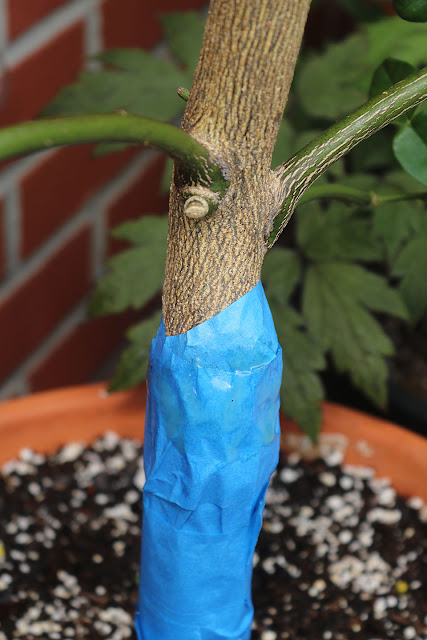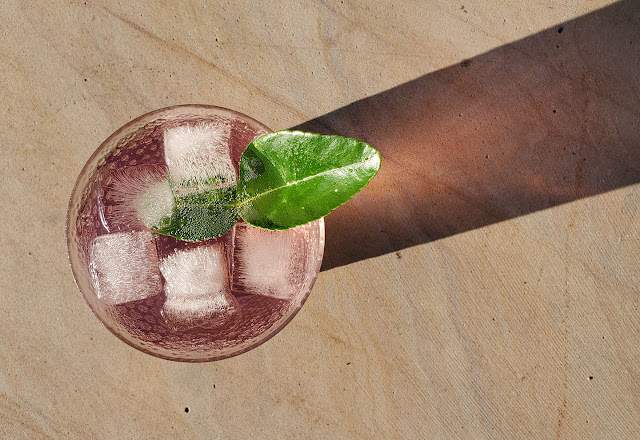Can you spot the blue tape on the Thai lime (Citrus hystrix), middle left? That lime (one of two) has had a rough year. Who hasn't? And July was an especially eventful month.
On July 5th I repotted. For the second time this year. Post possible fungal infection of roots, post root-pruning way back in January (that was to keep it down to size in the same pot that has to move indoors every winter). The tape was part of my follow up micromanagement of a persistent scale infestation, dating back to winter. So, yeah. It's a survivor. And I won't say post again.
The lime tree is stable, now. I can say it out loud. It's been nearly four weeks and no more dieback. New leaves formed and are maturing.
After the tree was repotted and the scale had gone to meet their maker ("Did he who made the Lamb [really] make thee?"- with apologies to William Blake) I had to think about ants. They returned, scurrying up and down the branches and triggering in me a severe case of OCD. Ants tend scale lovingly: they feed on the scales' honeydew (I've tasted it, it's straight up sweet), moving the little armored insects about and protecting them. So I had to prevent the ants from coming aboard to look after any tiny scale I had missed.
Enter Tanglefoot. It comes in a tub and is an outrageously sticky paste that you smear on tape wrapped around the trunk of trees affected by insect pests. Ants can't pass it to farm their scale flock. And it actually worked. The tip came from Nancy Lingnan, who offers - very good - advice at LemonCitrusTree.com. I turn to her via email when I have run out of ideas.
In our incredible heat - weeks over 90'F, in direct sun, I found that the Tanglefoot melted and ran down onto the exposed trunk, so I repeated the initial operation, smearing just a little around the top of the tape this time, and bending a moat at the bottom to catch run off. Once it's on the trunk itself it's almost impossible to get off (or your fingers, or anything it touches - use mineral oil).
We won't enjoy the bumper crop of limes we did last December, but luckily the Thai lime marmalade I made is still going strong. And the beauty of these trees - and please call them makrut, or Thai lime, not the k-word - is that their leaves are famously fragrant and useful. They perfume water, and gin, and salad dressings featuring Asian terrace herbs and spicy pickled vegetables. And then there is curry.
The chimney swifts' point of view, all of our garden lives exposed below. In this image the tree is left-of-center, bottom, all fluffed out. Its sibling is far right, camouflaged in a subtropical thicket of galangal and myoga ginger.
And no, no drone was involved in this shot - just a climb up the fire escape and a wide angle setting.
This is the end of the lime's story, but it's also not the end of the lime. And it's one of those timeless reminders that we learn far more when things go wrong than we do when they go right.
So fail on. In the end, it's more interesting.













